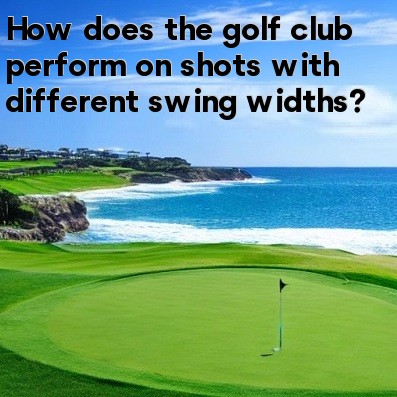
Golf Club Performance on Shots with Different Swing Widths
When it comes to golf, the swing is one of the most crucial aspects of the game. A golfer's swing width can significantly affect the performance of the golf club and the resulting shots. Let's explore how the golf club performs on shots with different swing widths.
- Narrow Swing Width: A narrow swing width refers to a swing where the golfer's arms and club move on a tighter plane. This type of swing tends to produce lower clubhead speed and reduced distance. However, it can also promote accuracy since the golfer has better control over the club during impact. The clubface is less likely to twist, resulting in straighter shots.
- Wide Swing Width: On the other hand, a wide swing width implies a swing where the golfer's arms and club move on a wider plane. This type of swing typically generates higher clubhead speed, leading to increased distance potential. However, the wider arc can make it challenging to maintain consistency, especially for beginner or less experienced golfers.
Overall, the golf club responds differently to shots with varying swing widths. Here are some key points to consider:
- Impact Position: The impact position is crucial for shot performance, regardless of the swing width. A narrow swing width can help golfers maintain a more stable impact position, resulting in better contact between the clubface and the ball. With a wide swing width, golfers need to be mindful of their impact position to avoid mishits or inconsistency in shot delivery.
- Control versus Distance: Narrow swing widths generally offer better control over the club during impact. Golfers with a narrow swing width will have an advantage in accuracy, particularly when navigating tight fairways or targeting specific landing zones. On the other hand, wide swing widths prioritize distance potential, enabling golfers to maximize their power and achieve longer shots.
- Clubhead Speed: Swing width directly affects clubhead speed. A wide swing width allows the golfer to generate higher clubhead speed, resulting in longer shots. However, it requires a proper understanding of timing and coordination to maintain control and accuracy. Golfers with a narrower swing width may have slightly lower clubhead speed but can compensate for it with improved consistency.
It's important to note that each golfer's swing width is unique and may depend on factors such as body type, flexibility, and playing style. Finding the right swing width that suits an individual's physical capabilities and goals is crucial for overall success on the golf course.
In conclusion, the golf club performs differently based on the swing width employed by the golfer. A narrow swing width promotes accuracy and consistency, while a wide swing width prioritizes distance potential. Considerations such as impact position, control versus distance, and clubhead speed play significant roles in shot performance. Ultimately, finding the optimal swing width that aligns with a golfer's abilities and objectives is essential for achieving success in the game of golf.





